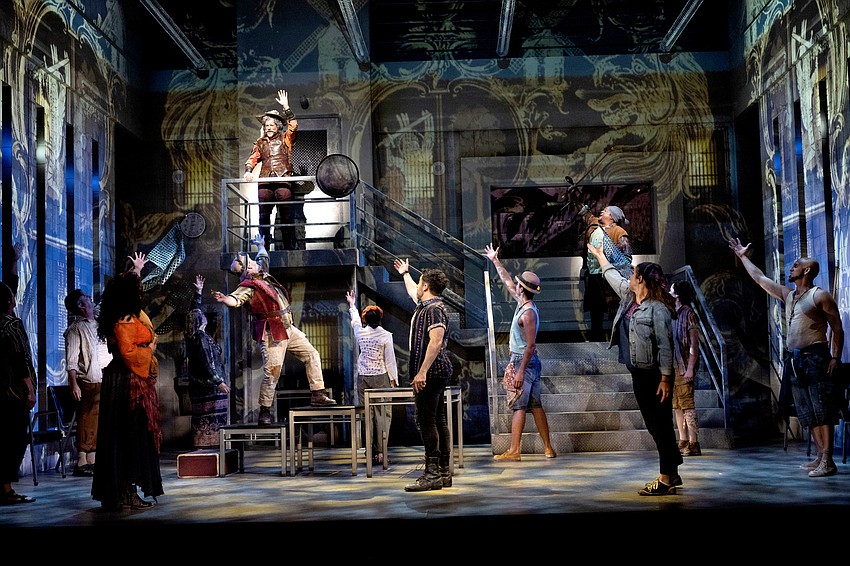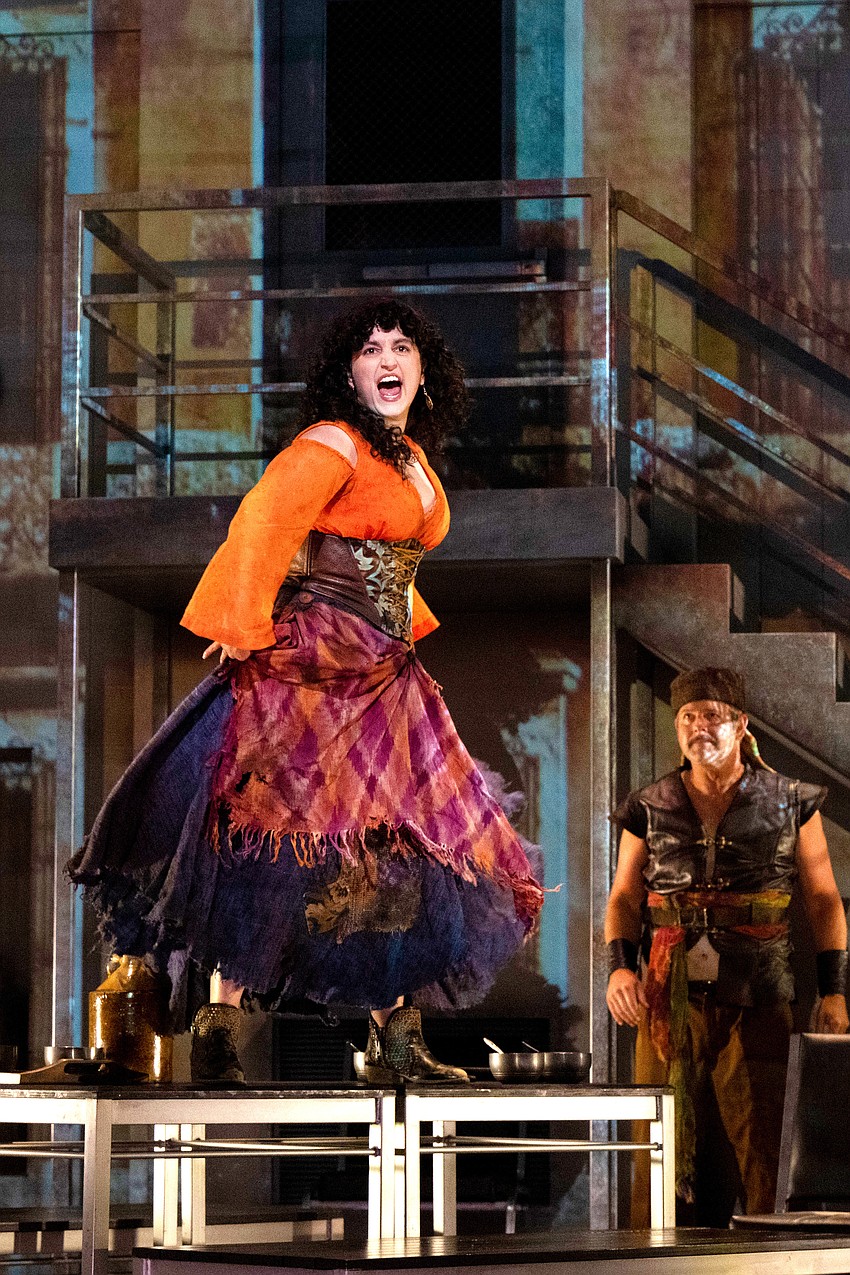- May 3, 2025
-
-
Loading

Loading

The literary quest of Don Quixote is a tangled odyssey of forgeries, distortions, translations and adaptations, so I’ll cut to the chase.
“Man of La Mancha,” playwright Dale Wasserman, lyricist Joe Darion and composer Mitch Leigh’s 1965 musical adaptation of Miguel de Cervantes’ satiric novel, has finally come to the Asolo Rep stage.
The skeleton of Cervantes’ plot is largely intact. Time: the 1600s. The place: La Mancha, an arid region of Spain. Alonso Quixano (Mauricio Martínez), an aging gentlemen on the lowest rung of nobility, reads too many heroic tales about knights in the days of chivalry. He reads, broods and loses his mind. He starts thinking that he could be one of those knights.
Reinventing himself as “Don Quixote,” he goes on a quest with his faithful sidekick, Sancho Panza (Aaron De Jesus). He tilts at windmills. He reimagines the lusty barmaid Aldonza (Janely Rodriguez) as the chaste Dulcinea and defends her honor. The world responds to his mad idealism with beatings and contempt.

In the musical’s clever frame story, the Spanish Inquisition throws Cervantes in a dungeon to await trial for heresy. The other prisoners try him first. The charge? Being an idealist, a bad poet, and an honest man. The author pleads guilty. To incline the court to leniency, he acts out his famous book.
In this musical’s conceit, the novel’s also a “troupe in a trunk” traveling show — and the author (conveniently) has the trunk with all the costumes. So … it’s showtime!
Director Peter Rothstein’s inventive, Broadway-quality production brings Quixote’s quest to the 21st century. Cervantes’ new prison evokes the holding pens of the Immigration and Customs Enforcement Service.
Michael Hoover’s beautifully ugly set design is the most depressing, boring, utilitarian space possible. But when Cervantes and his cast of prisoners act out Quixote’s quest, Marcus Dilliard’s lighting and Greg Emetaz’s projections transform it to the scenes of his story.
What you see is clearly a world of the imagination, brought to life by the author’s words. Hoover, Dilliard and Emetaz bring it to life on stage. It’s pure magic. Fabian Fidel Aguilar’s costumes also serve the musical’s parallax vision. They shift beautifully from the prisoners’ shabby garb to the rags and feathers of the play-within-a-play.
The actors all have magic of their own.
Martínez’s gripping portrayal of both the author and his famous creation is from the heart. He makes you believe in the impossible dreamer and the writer who dreamed him up in the first place. On top of that? Damn, the man can sing!
De Jesus delivers a great comic performance as Sancho Panza. His character could easily come off as a sucker or a sap for putting up with his friend’s antics. Why? “Because I like him,” is the simple explanation. De Jesus makes you believe it.

Rodriguez is also a standout. Her nuanced portrayal of Aldonza avoids cliché and evokes a tough, working-class woman who’s been kicked around by life, but refuses to be broken.
As Dr. Corrasco, the fiance of Quixano’s niece, Rodolfo Nieto is a haughty, manipulative sociopath. It’s a searing portrait. (When the bad doctor comes to life as a monstrously gigantic puppet, the scale of his heartlessness becomes clear.)
Quixote’s quest is a battle between good and evil — but it’s also a battle between imagination and reality. This musical paints him as a Christ figure. (His vigil under the stars echoes Christ’s night in the Garden of Gethsemane.)
“Man of La Mancha” is the passion of Don Quixote. But this is a musical, not religion. Is the trip worth taking?
Let’s give the author who dreamed this character up the last word:
When life itself seems lunatic, who knows where madness lies? Perhaps to be too practical is madness. To surrender dreams — this may be madness. To seek treasure where there is only trash. Too much sanity may be madness — and maddest of all: to see life as it is, and not as it should be!" –Miguel de Cervantes